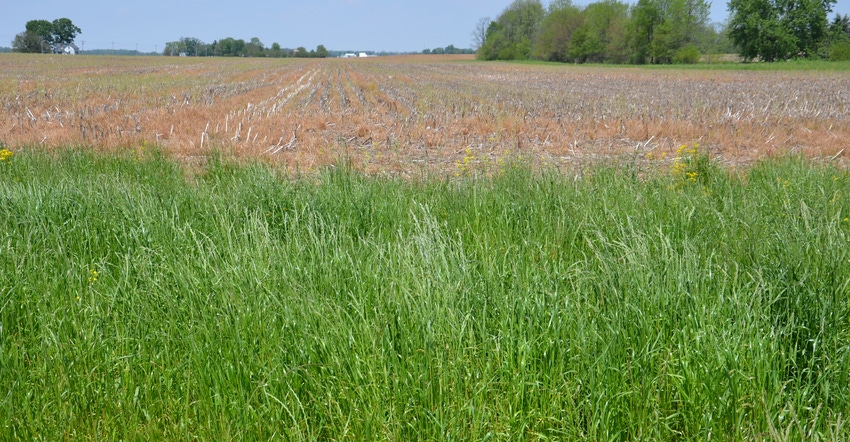
A strip of green grass along the edge of a field catches your attention. That’s especially true if you grew up in the era of fencerow-to-fencerow farming in the 1970s, when farmers even hugged road ditches to plant every foot possible.
Jarod Chew, district conservationist with the NRCS in Hendricks County, says field borders offer advantages. “We’ve seen several people install the practice along tree lines where the trees really hurt the first several rows of crops,” he notes. “They typically don’t get a lot of crop when they run their combine through those areas anyway.”
While some farmers may put these borders in on their own, many install them as part of a government program practice. Two basic programs entice producers to install field borders.
“One is EQIP,” Chew says. If you install field borders as a part of the Environmental Quality Incentives Program, you have more flexibility, he notes. Usually, you can turn equipment on these areas, and they help slow down sheet and rill erosion at the edge of fields.
Farmers interested in working through EQIP must apply, and then wait to see if their acreage is accepted. If their proposal is accepted, they typically receive a one-time flat-rate payment for installing field borders.
You can also install field borders through the continuous Conservation Reserve Program, as long as the acreage cap hasn’t been met for the program. In Indiana, using continuous CRP means you’re really working through a program geared to provide habitat for upland gamebirds. In Indiana, that’s quail.
This program pays a rental rate over the life of the contract, but there are more restrictions, Chew says. Since it’s a wildlife area, turning equipment and parking on these borders aren’t allowed. Minimum width is 30 feet and maximum width is 120 feet. These areas must be seeded to warm-seeded grasses under this program.
“Field borders are a great practice,” Chew concludes. “They also tie in well if you have filter strips in the same field along a stream or grassed waterways. “
Visit your local NRCS office for more information about installing field borders.
About the Author(s)
You May Also Like




